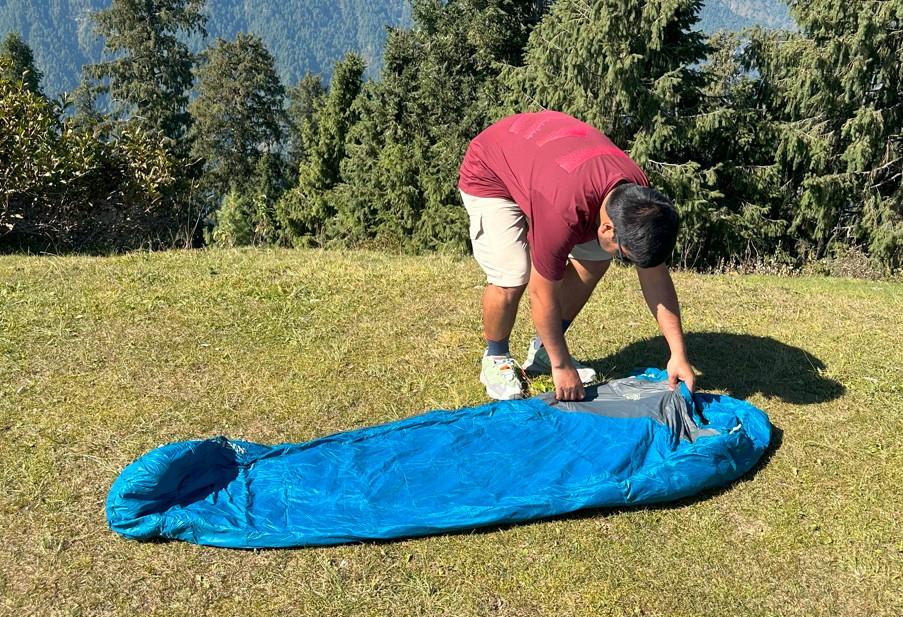Most of the users buy the wrong sleeping bag due to a lack of understanding about the material. Choosing the right type of insulation for your needs is critical. What is the sleeping bag weight, warmth, and packability? It is directly related to its insulation type. It also affects the price you pay for the sleeping bag.
Related: Best Budget Backpacking Sleeping Bags
The two types of insulation most frequently used in sleeping bags are down and synthetic. Both insulations, down and synthetic, have pros and cons that you must know before buying a sleeping bag.
Let’s discuss them in detail and conclude which insulation can offer you better value.
What is a Down Sleeping Bag?
A down sleeping bag is a type of sleeping bag filled with fluffy plumage taken from the down (ballies) of geese and ducks. The down traps the warm air (which comes from the body) inside the air spaces and threads to provide the warmth. That means the more fluffy a sleeping bag is, the better warmth it can provide.
Down Fill Power
Down fill power is a number that indicates the thickness and insulating capacity of a jacket or a sleeping bag. This number might not explain the warmth of the attire because warmth can be affected by other factors as well. Down is comparatively easy, small, packable, and handy to carry due to its small size. It also has a specific heat-trapping mechanism, which sets it apart from other materials.
One can easily test down by placing a disc on one ounce of it and measuring the compression over a specific time period. More resilient down compresses less. A 900-fill power is an indicator of high-quality down.
A 900-fill-power jacket is a desirable item for outdoor activities due to its portability. A jacket as low as 500 fill can also be a better choice if it is puffy.
Fill weight is another area to consider, as very few makers consider it. 50g of a 900-fill-power jacket is equivalent to 100g of a 450-fill jacket, as it compresses more efficiently
The warmth of a jacket cannot accurately be measured due to factors like clothing layers and the metabolism of the wearer, etc.
Compared to synthetic fill, down fill is quite unique in terms of insulation efficiency; the two materials are not directly comparable.
What is a Synthetic Sleeping Bag?
A synthetic sleeping bag filled with man-made insulation fibers, such as synthetic or polyester, can trap warm air the same way down bags do. Synthetic sleeping bags mimic the insulation properties of down to trap the warm air and provide warmth.
Materials like hollofilm, thermolite, primaloft, and thinsulate are commonly used to achieve not only warmth but also loft and compression.
Down vs. Synthetic Sleeping Bag: Key Differences
Insulation and Warmth
Down provides warmth primarily through its insulating properties. The soft plumes provide loft and create tiny warm pockets that trap the hot air that comes from the body. This means that instead of releasing warm air, down captures it inside the material.
You might have noticed the fill power of sleeping bags. For instance, the Kelty Cosmic Down 20 is a 550 fill power down sleeping bag. What is the fill power?
It’s a unit used to measure the quality of down insulation. Fill power is directly proportional to the quality of the down.
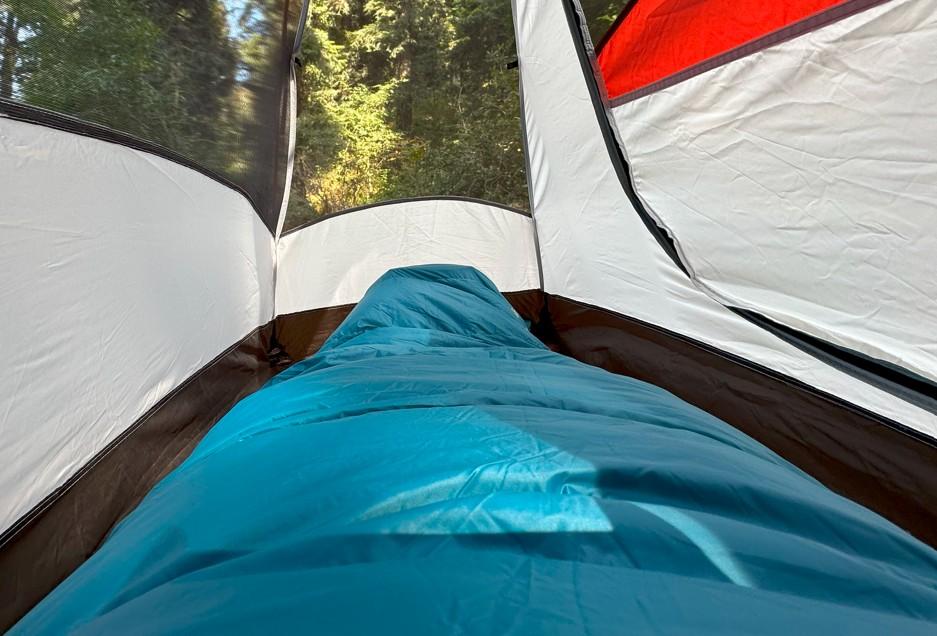
In simple terms, it measures the loft (fluffiness) of the down and its ability to trap the hot air. A higher fill power provides better insulation and warmth while requiring less down.
You will find fill power ranges from 500 to 900 or more. The higher number means that the bag will also be more expensive. The warmth-to-weight ratio of down makes it the best when it comes to quality sleeping bags. A little high-quality down offers great warmth and compressibility. This makes it easy to pack and carry.
Synthetic insulation mimics the down insulation properties using materials such as polyester fibers. These fibers trap the air within their loft. Higher loft means that you will get better insulation and warmth.
One downside of synthetic sleeping bags is their lower warmth-to-weight ratio. You need to add more weight to get better insulation. Down insulation beats synthetic insulation. It’s lighter and keeps you warmer.
Down sleeping bags perform better in dry and cold weather conditions. But down absorbs moisture, which makes it a bad choice in wet or damp weather. That’s when you’ll want to opt for synthetic sleeping bags.
Weight and Packability
How much you can compress the sleeping bags depends on the material used. Down sleeping bags (with high fill power) are highly compressible as compared to synthetic ones. That gives them an edge over synthetic bags for ultralight backpackers.
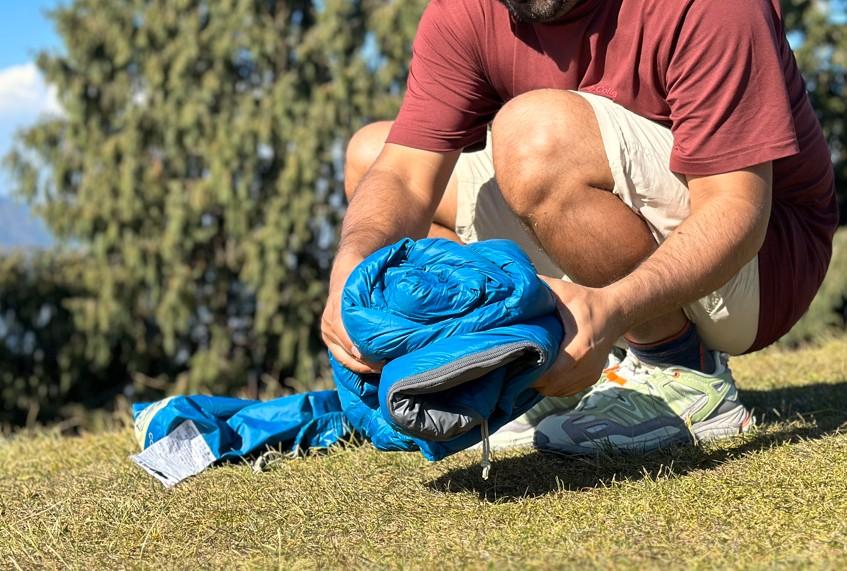
Synthetic fibers, such as polyester, are less fluffy than down and have a denser structure.
Manufacturers try their best to reduce the weight and packed size of synthetic sleeping bags by using advanced techniques.
However, they face a challenge to achieve the same level of insulation as down. So, they have to add more material that increases the weight of the sleeping bag. It does not compress like a down-filled sleeping bag, so it takes more space in the pack.
With time, synthetic loses its ability to fully recover from compression and eventually becomes less insulated. On the other hand, down quickly gains its loft compared to synthetic.
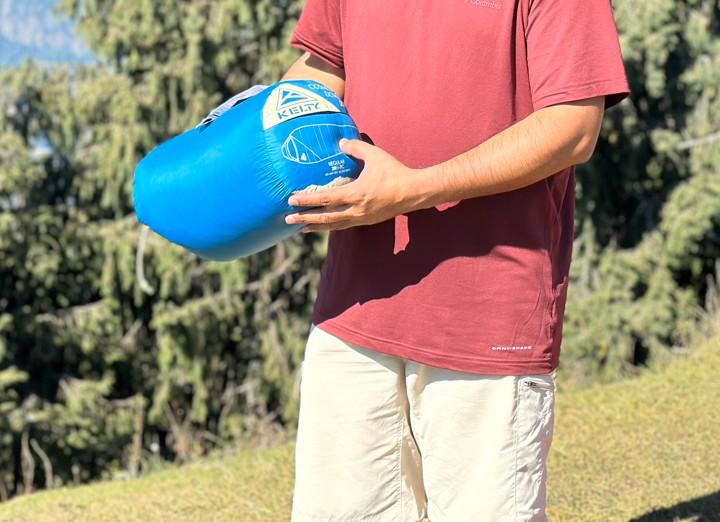
That’s why ultralight backpackers prefer down sleeping bags for their superior insulation and lightweight. For most regular backpackers, however, synthetic sleeping bags are also a good option.
Moisture Resistance
One of the biggest drawbacks of down is that it loses its insulation power if it gets wet. Synthetic, on the other hand, performs well during wet and humid weather due to moisture resistance properties.
Drying time of down is also much longer than the synthetic. Some manufacturers try to use hydrophobic-treated down to resist water for a bit longer. It helps to dry the down sleeping bag a bit faster.
All in all, if you frequently backpack in high, wet, humid, or rainy areas, it’s preferred that you carry the synthetic sleeping bag. Down works much better in dry and cold weather conditions.
Durability
Down sleeping bags are generally more durable and perform better in the long run. Durability depends on how well you maintain your down sleeping bag.
You also need to keep them away from moisture; otherwise, you will degrade their insulation quality. Some of the expensive down sleeping bags even last for more than 10 years with proper care. If you want to wash them, you need down-safe detergent, not the regular detergent.
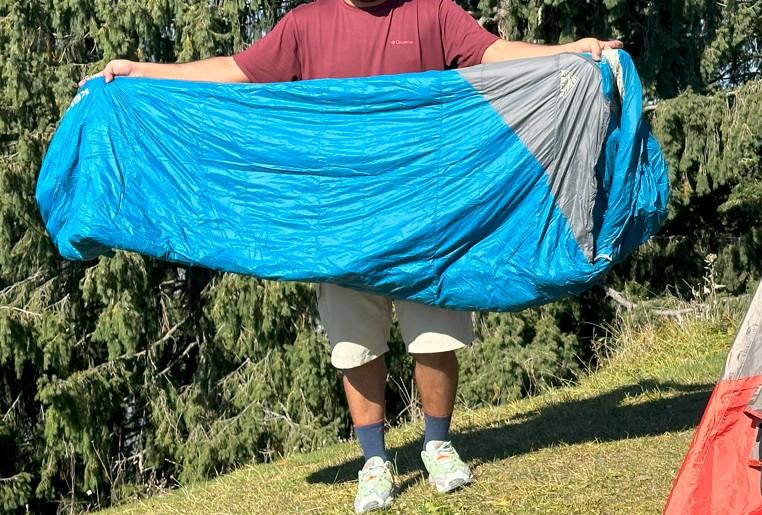
Synthetic bags are not as durable as down sleeping bags. Over time, the synthetic fibers will compress and won’t come back to their original shape. That means they also start losing insulating properties with time. If you are just an occasional backpacker, then this bag can serve you well at a decent budget.
Pros and Cons of Down Sleeping Bags
Pros:
- Superior warmth-to-weight ratio.
- Highly compressible
- Easy to pack
- Durable (with proper care)
Cons:
- Expensive.
- Loses insulation when wet (requires extra care).
Pros and Cons of Synthetic Sleeping Bags
Pros:
- More affordable.
- Retains warmth even when wet.
- Easy to maintain
Cons:
- Bulkier
- Take space in backpack
- Shorter lifespan
- Less compressible than down
Summary: Down vs. Synthetic Sleeping Bag
That’s all. Now you can decide which one to buy between down and synthetic sleeping bags. For cold, dry weather, use a down sleeping bag. It’s pricier, but it’s a great value for ultralight backpackers. Synthetic sleeping bags are great for most hikers. They keep their insulation even in wet or damp weather, unlike down bags. They are cheap but a bit heavier and tend to lose insulation with time. Quality down is really durable, and it’s worth the investment if you are an advanced backpacker. If you take care of it properly, bags will serve you for years. Whether you choose down or synthetic, knowing How to Store a Sleeping Bag properly is key to maintaining its insulation and loft.
Related: Sleeping Bag vs Quilt
